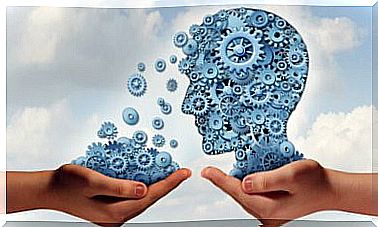The Affectivity Heuristic: How We Feel Is How We Think

The affectivity heuristic tells us that emotions determine a large part of our thoughts and, consequently, our own decisions. Something like this has great relevance, for example, in the way we eat, shop and react to everyday difficulties in life, where there is not always time to reflect, to think better.
In a world of rush, evaluations based on the purely emotional govern much of our behavior. Without a doubt, we would all love to have more time to filter and process much of the information we receive. It would be great to be able to stop the second hand of the clocks and stop the time, to appreciate in a more relaxed way everything that surrounds us.
However, such a nuance is not always possible. Hence, we often issue responses, behaviors and choices in a matter of seconds without previously passing through the mental room of analysis and the tapestry of reflection. Thus, specialists on the subject, such as Daniel Kahneman, cognitive psychologist, Nobel Prize winner and expert in decision-making, point out something interesting.
When we think fast, we often don’t do it right. And we do not do it for a simple reason: because we do not feel good either, because our state of mind is not in all cases the most favorable. At the end of the day, people cannot choose “the way we feel” and when the most complex emotions take control, reality becomes complicated.

The affectivity heuristic, what is it?
The affectivity heuristic reminds us that the world of emotions is more powerful than we might initially believe. In fact, neuroscientists are not wrong when they point out that the human being is, above all, an emotional creature who, one fine day, learned to think.
Moreover, Antonio Damasio, a cognitive neurobiologist recognized for his work as a popularizer, explains in The Strange Order of Things, that emotions, understood basically as somatic markers, influence a large part of our reasoning. Thus, and although sometimes we take for granted that “by controlling the thought we will dominate the emotions”, the thing is not as simple as it seems.
Affective heuristics: quick responses to everyday needs
A heuristic is a mental shortcut. It is a strategy that we use to solve a specific problem quickly and as simply as possible. In this way, we understand that affective heuristics are responses and choices that we make unconsciously based on how we feel at that moment.
These evaluations based only on affect (not reflection) are quick and automatic. Now, does this mean that all decisions we make with these heuristics are wrong? The answer is no”. As Slovic, Finucane, Peters and MacGregor (2002) explain to us, affective heuristics also start from our experiences.
These would be some simple examples:
- When I’ve had a bad day at work, I go shopping. I do it because I know that on other occasions it has made me feel good, and that feeling pleases me. However, this implies a risk ⇒ I will end up buying things that I do not need.
- I am a recruitment technician in a company. I have to choose a candidate among all those I have interviewed on this very day. I will choose the one who gives me the most confidence regardless of their training and experience, because on other occasions it has given me good results.
Studies such as those carried out by Dr. Paul Slovic, from the University of Oregon, indicate that these types of judgments based on the affectivity heuristic occur when people do not have time to reflect or when our state of mind it is very low and we cannot think clearly, more reflectively.

What happens if I make all my decisions under the affectivity heuristic?
The affectivity heuristic shows us that this type of “mental shortcut” mediates a large part of our decisions, be they big or small. Sometimes, there is no doubt, we can act correctly by letting ourselves be carried away by that first impulse, by that somatic imprint, as defined by Antonio Damasio.
However, in a good part of the time, by acting automatically and purely emotional, we lead to harmful and even negative behaviors for ourselves. We can, for example, fall into an eating disorder, addictive behaviors, or simply make a decision that later we end up regretting completely.
Now, to avoid (or at least control) this type of behavior, it is not at all a matter of completely excluding the emotional component of our mind. People are basically emotions and therefore we must not separate them, we must understand them, handle them, integrate them and have control over them.
Dr. Daniel Kahneman explains to us in his book Thinking fast, thinking slowly , that we should promote slower and deliberative thinking, where we are not always led by the first impulse. Balancing emotions with the sense of logic, threading feelings with the thread of adequate reflection, will undoubtedly help us to weave more thoughtful and surely even correct decisions. Let’s try it at least.









